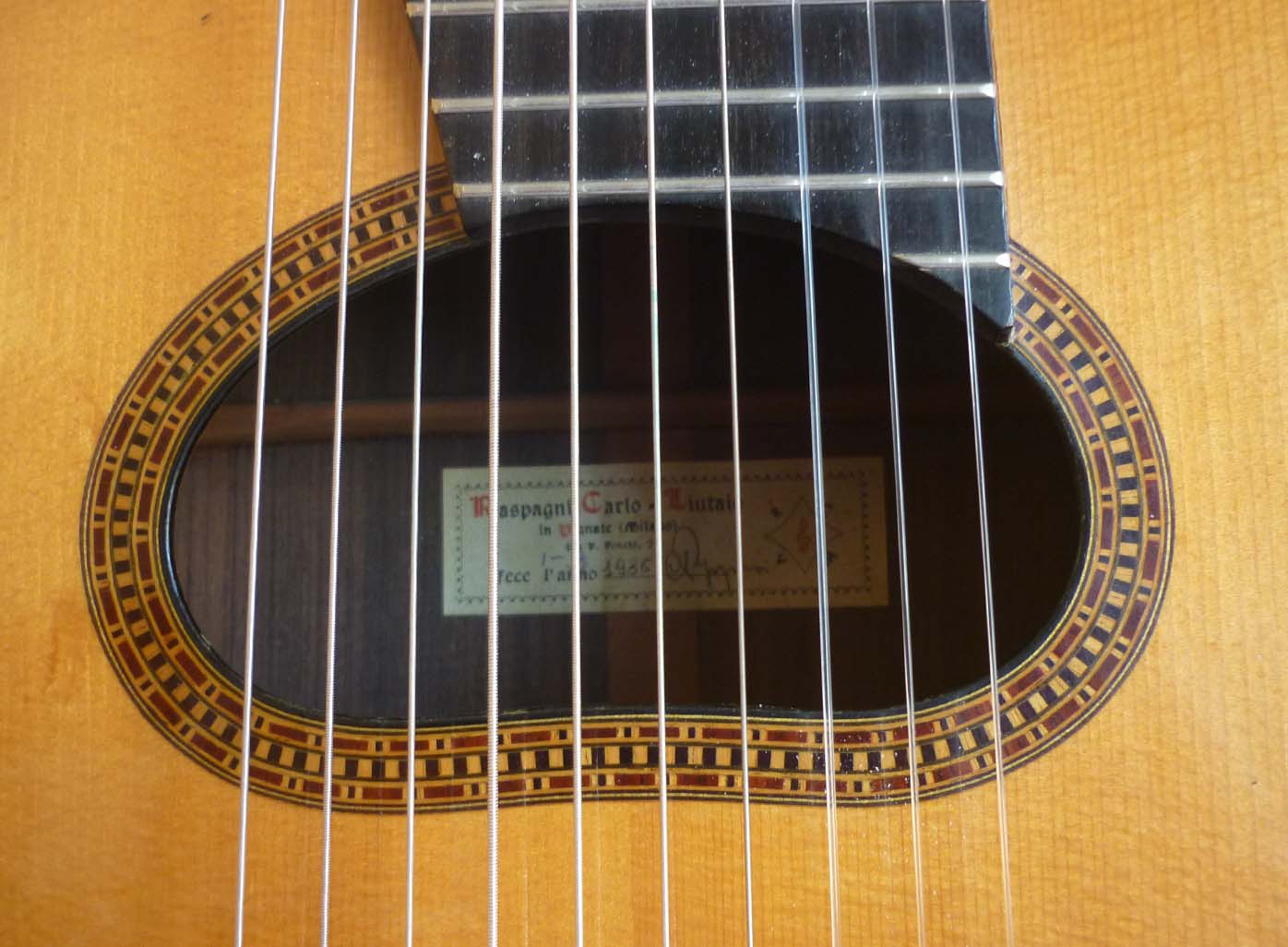
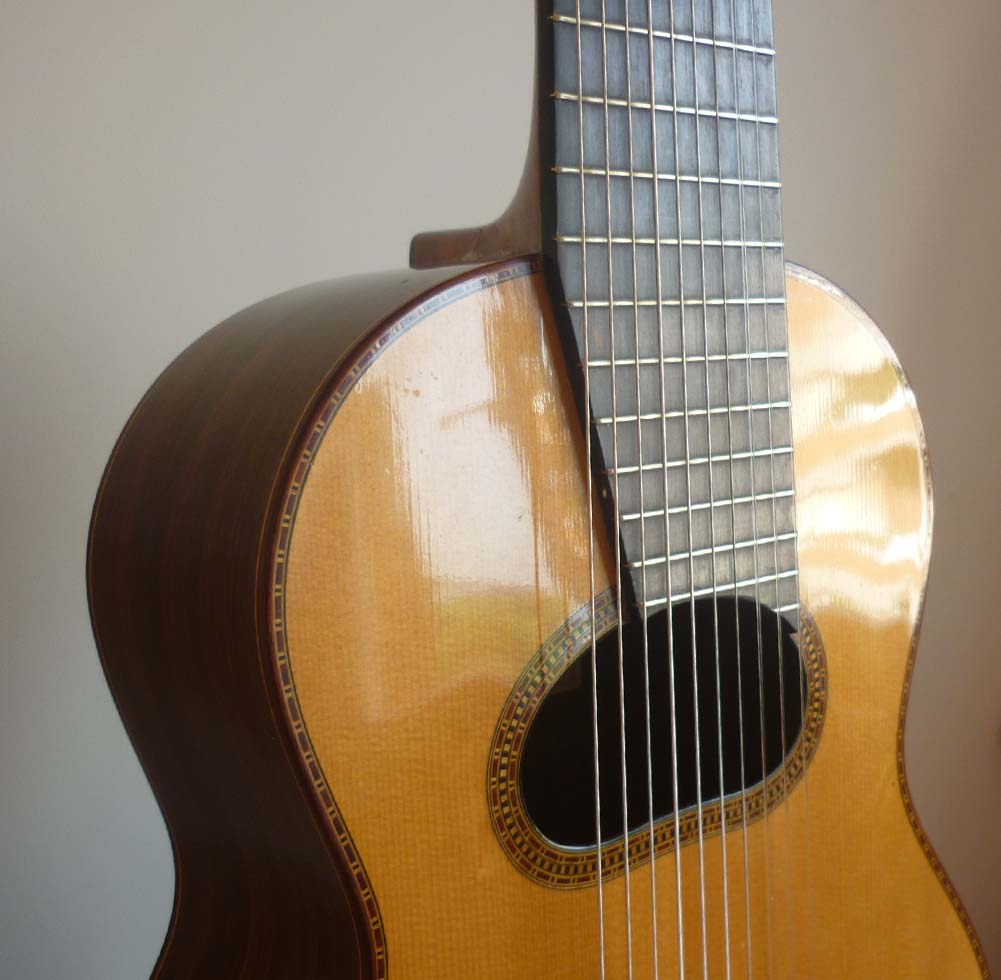
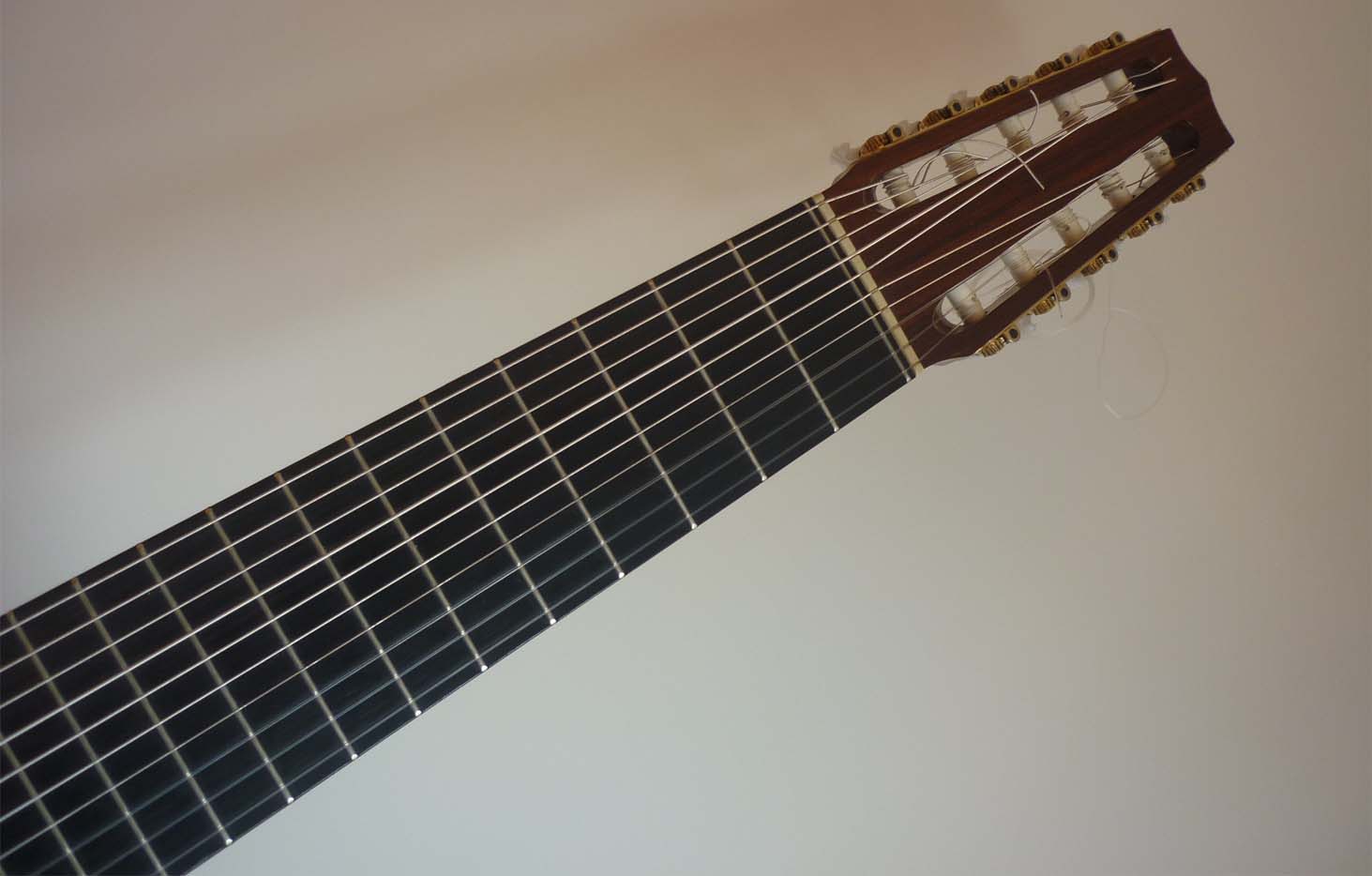
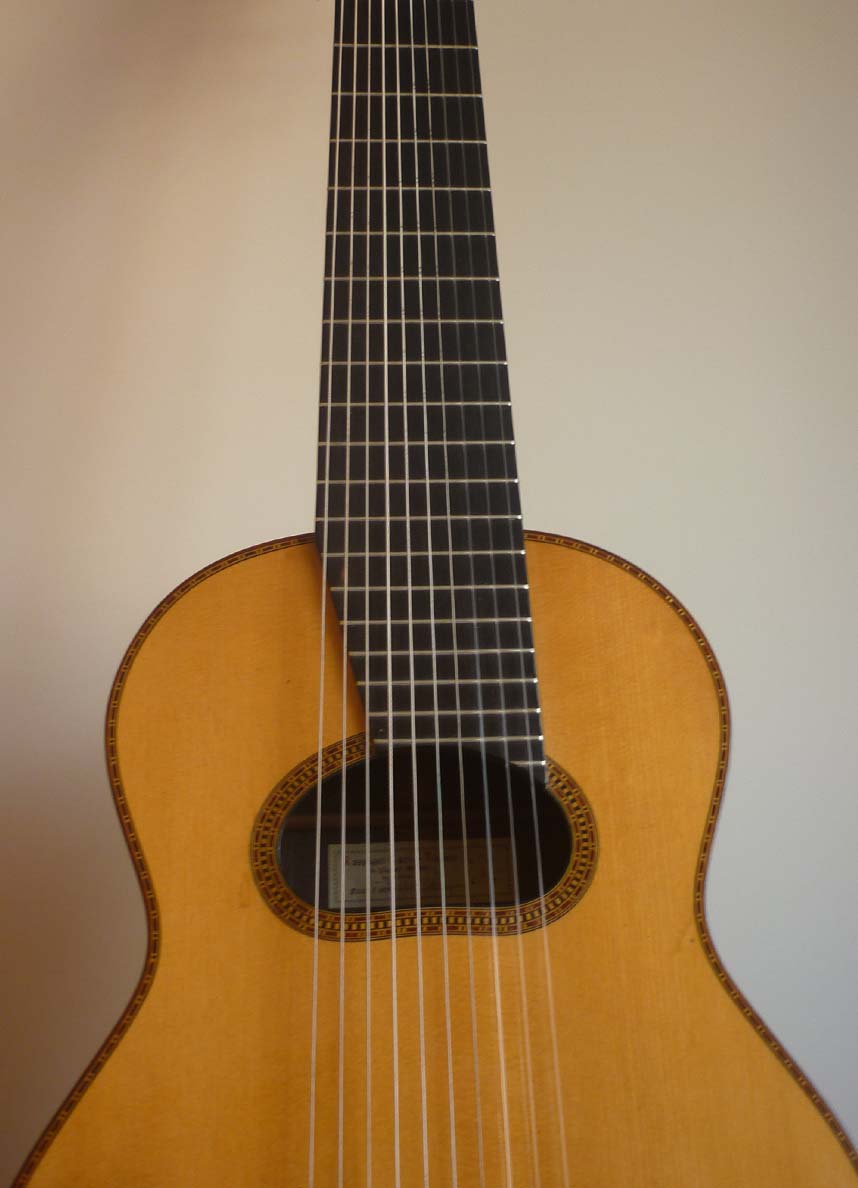
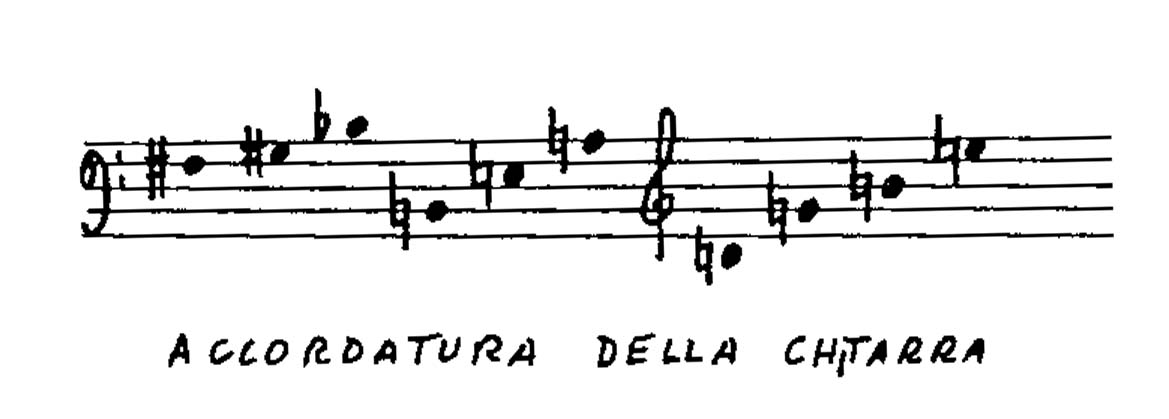
Carlo Raspagni:
10-string guitar - 1985
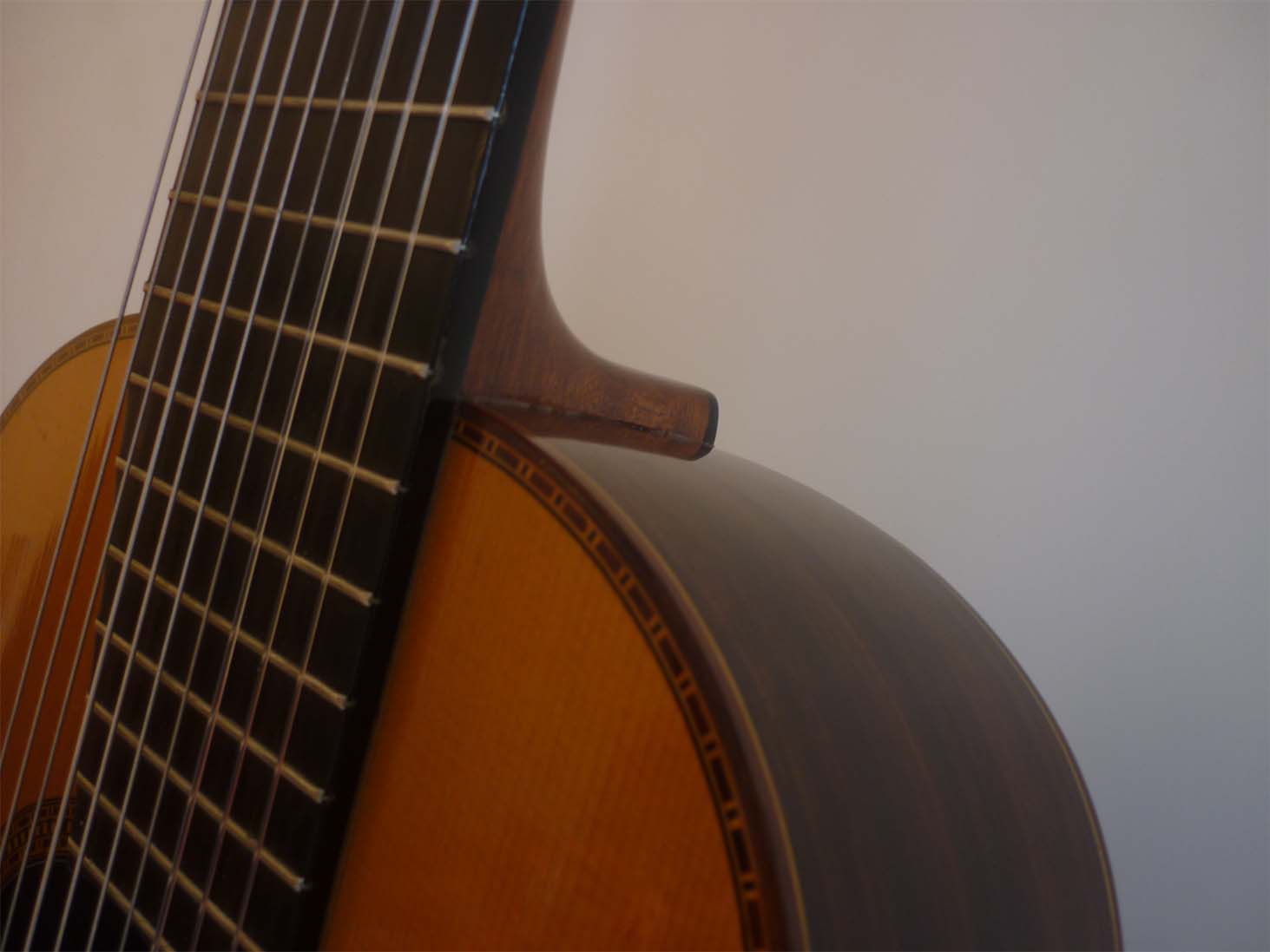
Y después
It was written for the Spanish guitarist Narciso Yepes and for a 10-string instrument. The fundamental characteristic of this instrument, however, lies in its tuning: not the simple addition of descending basses but a reentrant tuning for the eighth, ninth, and tenth strings. The registers are therefore centered around a mid-low tessitura, with the seventh string remaining the lowest, tuned to C2 (the fourth string of the cello). If we were to consider the range, the instrument could mount only seven strings. The sound balance is achieved through the heights of the wound strings, offering particular power, together with a compact resonance box. For this reason, the 10-string guitar with this tuning is particularly different from nineteenth-century models, the baroque lute, and the theorbo. The idea and practice of reentrant strings, as is well known, were one of the prerogatives of seventeenth- and eighteenth-century guitars.
Maurice Ohana was among the first to write for this instrument, Tiento(1955-65), Si le jour paraît... (1963), Cadran Lunaire (1981-82). The luthier Josè Ramirez III (1922-1995) collaborated with Yepes to develop the instrument as early as the 1960s. And always in Spain, we remember the excellent guitars of Paulino Bernabé. The 10-string guitar in Italy also has a line linked to Yepes: one school was that of Hirotsugu Kakinuma, guitarist and teacher active in Turin for many years. Among Italian luthiers, we highlight Luigi Locatto (1953) and Carlo Raspagni (1925-99) - see photo.
When Bruno Maderna wrote Y después (1971), the technique and reliability of the instrument had already emerged from a long period of experimentation. The only addition is the retuning of the seventh string tuned to B1.
Y después (1971) uses the guitar in a traditional way. The sounds are very balanced and distributed throughout the tessitura. The seventh string has a precise role in many sections: sometimes in complete relief and often used in various harmonic masses. The sound idea is then functional to the structure and to that infinite enchantment of numbers that in Maderna has its own precise connotation, in the heights and/or in the form: and precisely also in Y después where he writes: The text by Garcia Lorca suggests a form....
F.C.
Bibliography:
- B. Maderna, Y después for Narciso Yepes (1971), Ricordi, Milan 1973
(in the photo, tuning from Maderna's manuscript).
- Bruno Maderna documents (edited by M. Baroni and
R. Dalmonte),
"Y después" p. 298. Suvini Zerboni, Milan 1985.
- Carlo F. Raspagni (1925-99) p. 116 in G. Antonioni, Dictionary of plucked instrument
builders in Italy from the 15th to the 20th century, Turris, Cremona 1996.